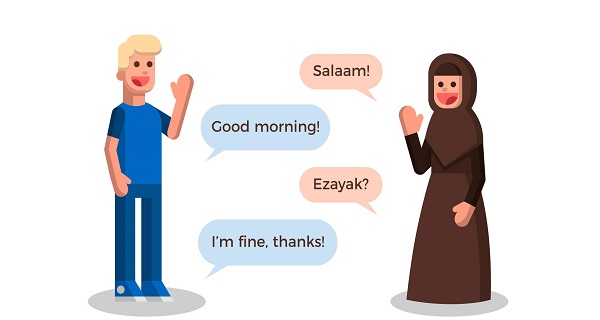Lost in Translation: The Hilarious Misunderstandings of My Multilingual Relationship
-
Table of Contents
- Introduction
- How to Overcome Language Barriers in a Multilingual Relationship
- The Benefits of Learning a Second Language for Couples
- Exploring the Cultural Differences in a Multilingual Relationship
- The Challenges of Raising Bilingual Children in a Multilingual Relationship
- The Impact of Technology on Multilingual Relationships
- Conclusion
“Lost in Translation: A Journey of Laughter and Love Through a Multilingual Relationship!”
Introduction
Lost in Translation: The Hilarious Misunderstandings of My Multilingual Relationship is a humorous and heartfelt memoir about the joys and challenges of being in a relationship with someone who speaks a different language. Written by author and translator, Sarah L. Smith, this book is a must-read for anyone who has ever experienced the unique joys and frustrations of being in a multilingual relationship. Through her own experiences, Smith shares the funny, embarrassing, and sometimes heartbreaking moments that come with trying to communicate with someone who speaks a different language. She also offers insight into the cultural differences that can arise when two people from different backgrounds come together. With its honest and humorous approach, Lost in Translation is sure to provide readers with a better understanding of the complexities of multilingual relationships.
How to Overcome Language Barriers in a Multilingual Relationship
Maintaining a successful relationship when both partners come from different language backgrounds can be challenging. Language barriers can create misunderstandings and lead to frustration and resentment. However, with the right strategies, couples can overcome language barriers and build a strong, healthy relationship.
1. Learn each other’s language. Learning the language of your partner is a great way to bridge the communication gap. It can help you understand each other better and build a stronger connection. Start by learning basic phrases and words, and then gradually build up your vocabulary. You can take language classes together or use online resources to learn.
2. Use visual aids. Visual aids such as pictures, diagrams, and videos can be helpful when communicating with someone who speaks a different language. They can help you explain complex concepts and make it easier to understand each other.
3. Use a translator. If you’re having trouble understanding each other, you can use a translator to help. There are many online translation services available, or you can hire a professional translator.
4. Spend time together. Spending quality time together can help you build a stronger bond and better understand each other. Try to do activities that don’t require a lot of talking, such as going for a walk or playing a game.
5. Be patient. It’s important to be patient and understanding when communicating with someone who speaks a different language. Don’t get frustrated if you don’t understand each other right away. Take your time and be willing to make mistakes.
By following these tips, couples can overcome language barriers and build a strong, healthy relationship. With patience and understanding, couples can learn to communicate effectively and enjoy a fulfilling relationship.
The Benefits of Learning a Second Language for Couples

Learning a second language as a couple can be a rewarding experience that can bring couples closer together. Not only does it provide an opportunity to learn something new together, but it can also help to strengthen the bond between partners. Here are some of the benefits of learning a second language for couples.
1. Improved Communication: Learning a second language can help couples to communicate more effectively. By learning a language together, couples can learn to understand each other better and communicate more clearly. This can help to reduce misunderstandings and improve the overall quality of the relationship.
2. Increased Intimacy: Learning a language together can help to increase the level of intimacy between partners. By learning a language together, couples can share experiences and learn more about each other. This can help to create a deeper connection between partners and can lead to a stronger bond.
3. Increased Cultural Understanding: Learning a language together can help to increase the understanding of different cultures. By learning a language together, couples can gain a better understanding of the culture and customs of the language they are learning. This can help to create a more open and accepting relationship between partners.
4. Improved Mental Health: Learning a language together can help to improve mental health. By learning a language together, couples can reduce stress and anxiety and can help to improve their overall mental health. This can help to create a more positive and healthy relationship between partners.
Overall, learning a second language as a couple can be a rewarding experience that can bring couples closer together. Not only does it provide an opportunity to learn something new together, but it can also help to strengthen the bond between partners. By learning a language together, couples can improve their communication, increase their intimacy, gain a better understanding of different cultures, and improve their mental health.
Exploring the Cultural Differences in a Multilingual Relationship
Multilingual relationships can be incredibly rewarding, but they can also present unique challenges. Cultural differences can be a source of tension, but they can also be a source of enrichment. Exploring these differences can help couples to better understand each other and to build a stronger relationship.
One of the most obvious cultural differences in a multilingual relationship is language. Even if both partners are fluent in the same language, they may have different dialects or accents. This can lead to misunderstandings and confusion, but it can also be a source of amusement and connection. Exploring the nuances of language can help partners to better understand each other and to appreciate the beauty of their native language.
Another cultural difference in a multilingual relationship is the way in which each partner expresses themselves. Different cultures have different ways of expressing emotions, and this can lead to misunderstandings. For example, one partner may express anger in a loud and direct way, while the other may express it in a more subtle and indirect way. Exploring these differences can help partners to better understand each other and to find ways to communicate effectively.
Finally, cultural differences can also be seen in the way that each partner views the world. Different cultures have different values and beliefs, and this can lead to disagreements. Exploring these differences can help partners to better understand each other and to find common ground.
Exploring the cultural differences in a multilingual relationship can be a challenging but rewarding experience. It can help partners to better understand each other and to build a stronger relationship. By taking the time to explore these differences, couples can create a deeper connection and a more fulfilling relationship.
The Challenges of Raising Bilingual Children in a Multilingual Relationship
Raising bilingual children in a multilingual relationship can be a rewarding experience, but it also presents a number of challenges. Parents must be aware of the potential difficulties and be prepared to address them in order to ensure their children’s success.
One of the most common challenges is the lack of consistency in language exposure. When parents come from different language backgrounds, it can be difficult to ensure that both languages are used equally. This can lead to confusion and frustration for the child, as well as a lack of fluency in both languages. To address this issue, parents should make a conscious effort to use both languages in the home and to provide equal opportunities for their children to learn and practice both languages.
Another challenge is the potential for language dominance. If one language is used more often than the other, the child may become more comfortable with that language and may begin to prefer it over the other. To prevent this, parents should make sure that both languages are used equally and that both parents are actively involved in teaching and reinforcing the use of both languages.
Finally, parents must be aware of the potential for language interference. When two languages are used in the same environment, it is possible for the child to mix the two languages together, resulting in a hybrid language. To prevent this, parents should be consistent in their language use and should encourage their children to use the correct language for each situation.
Raising bilingual children in a multilingual relationship can be a rewarding experience, but it also presents a number of challenges. By being aware of these challenges and taking steps to address them, parents can ensure that their children are successful in learning and using both languages.
The Impact of Technology on Multilingual Relationships
The impact of technology on multilingual relationships is undeniable. In today’s globalized world, technology has enabled people to communicate across language barriers, allowing for the development of relationships between people who speak different languages.
One of the most significant impacts of technology on multilingual relationships is the ability to communicate in real-time. With the advent of instant messaging, video conferencing, and other online communication tools, people can now communicate with each other in real-time, regardless of the language they speak. This has enabled people to form relationships with people from different countries and cultures, and to engage in meaningful conversations without having to learn the other person’s language.
Another impact of technology on multilingual relationships is the ability to access language-learning tools. With the proliferation of online language-learning tools, people can now learn a new language quickly and easily. This has enabled people to learn the language of their partner, allowing them to communicate more effectively and to deepen their relationship.
Finally, technology has enabled people to access translation services. With the help of translation services, people can now communicate with each other in their native language, even if they do not speak the same language. This has enabled people to form relationships with people from different countries and cultures, and to engage in meaningful conversations without having to learn the other person’s language.
In conclusion, technology has had a profound impact on multilingual relationships. It has enabled people to communicate in real-time, to access language-learning tools, and to access translation services. These advances have enabled people to form relationships with people from different countries and cultures, and to engage in meaningful conversations without having to learn the other person’s language.
Conclusion
Lost in Translation: The Hilarious Misunderstandings of My Multilingual Relationship is a humorous and insightful look into the challenges of navigating a relationship between two people who speak different languages. It is a reminder that communication is key in any relationship, and that it is important to be patient and understanding when it comes to language barriers. The book is a great read for anyone who is in a multilingual relationship, or anyone who is interested in learning more about the complexities of communication.
Related
Related Posts
-
 Our Funny Encounter with a Street Vendor: A Cute Relationship Story
No Comments | Feb 24, 2023
Our Funny Encounter with a Street Vendor: A Cute Relationship Story
No Comments | Feb 24, 2023 -
 The Time We Tried to Learn a New Dance: A Funny Relationship Story
No Comments | Feb 24, 2023
The Time We Tried to Learn a New Dance: A Funny Relationship Story
No Comments | Feb 24, 2023 -
 Our Funny Encounter with a Street Performer: A Cute Relationship Story
No Comments | Feb 24, 2023
Our Funny Encounter with a Street Performer: A Cute Relationship Story
No Comments | Feb 24, 2023 -
 After 37 Years Of Marriage Husband Dumps His Wife For His Secretary, Wife Plots Perfect Revenge
No Comments | Jul 18, 2023
After 37 Years Of Marriage Husband Dumps His Wife For His Secretary, Wife Plots Perfect Revenge
No Comments | Jul 18, 2023
